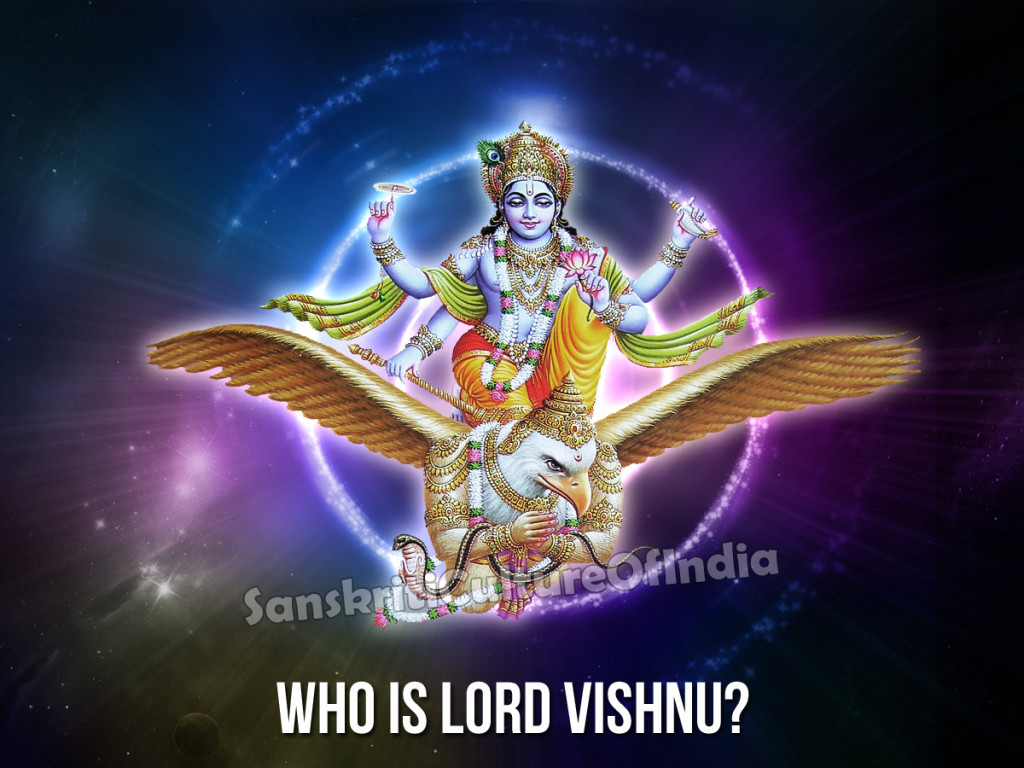[hr]
The 10 Avatars:
2. Koorma
3. Varaaha
4. Narasimha
5. Vaamana
6. Parasurama
7. Lord Rama
8. Lord Krishna
9. Buddhaand the yet to appear 10th incarnation called the Kalki avatar.
In his commonest form, Vishnu is portrayed as having a dark complexion – the color of passive and formless ether, and with four hands.
Sankha, Chakra, Gada, Padma:
On one of the backhands he holds the milky white conch shell or ‘sankha’ that spreads the primordial sound of Om, and on the other a discuss or ‘chakra’ – a reminder of the cycle of time – which is also a lethal weapon that he uses against blasphemy. It is the famous Sudarshana Chakra that is seen whirling on his index finger. The other hands hold a lotus or ‘padma’, which stands for a glorious existence, and a mace or ‘gada’ that indicates punishment for indiscipline.
The Lord of Truth:
Out of his navel blossoms a lotus, known as Padmanabham. The flower holds Brahma, the God of Creation and the embodiment of royal virtues or ‘Rajoguna’. Thus, the peaceful form of Lord Vishnu discards the royal virtues through his navel and makes the Sheshnag snake that stands for the vices of darkness or ‘Tamoguna’, his seat. Therefore Vishnu is the Lord of ‘Satoguna’ – the virtues of the truth.
The Presiding Deity of Peace:
Vishnu is often depicted as reclining on a Sheshanaga – the coiled, many-headed snake floating on cosmic waters that represents the peaceful Universe. This pose symbolizes the calm and patience in the face of fear and worries that the poisonous snake represents. The message here is that you should not let fear overpower you and disturb your peace.
Garuda, the Vehicle:
The vehicle of Vishnu is the Garuda eagle, the king of the birds. Empowered with the courage and speed to spread the knowledge of the Vedas, Garuda is an assurance of fearlessness at the time of calamity.
Vishnu is also known as Narayana and Hari. The devout followers of Vishnu are called Vaishnavas, and his consort is Goddess Lakshmi, the goddess of wealth a and beauty.
~ By Subhamoy Das











